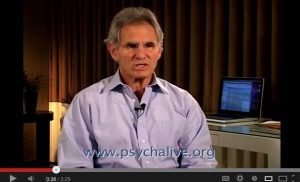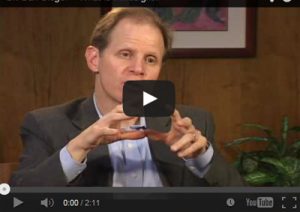Promotion for Emotions
 When Scott Pruitt was the head of the U.S. Environmental Protection Agency, one of the main controversies was the lack of regulation and actual promotion of big business at the cost of human and environmental health. What we choose to promote and what we choose to regulate will reveal what we value. What we value drives us in a particular direction. We can get lost in our impulse to control our experience (e.g., the environment) to demand a sense of reward or pleasure (e.g., money/power) rather than seeking long-term sustainability. We can roll in the dough now only to find we have no earth to spend it on later. However, if we take time to reflect on the real cost, we can weed out those addictive patterns of immediate gratification to clear the way for the cultivation of long-term meaning.
When Scott Pruitt was the head of the U.S. Environmental Protection Agency, one of the main controversies was the lack of regulation and actual promotion of big business at the cost of human and environmental health. What we choose to promote and what we choose to regulate will reveal what we value. What we value drives us in a particular direction. We can get lost in our impulse to control our experience (e.g., the environment) to demand a sense of reward or pleasure (e.g., money/power) rather than seeking long-term sustainability. We can roll in the dough now only to find we have no earth to spend it on later. However, if we take time to reflect on the real cost, we can weed out those addictive patterns of immediate gratification to clear the way for the cultivation of long-term meaning.
This idea of promotion and regulation can be a metaphor for how we deal with our emotions. How we regulate our emotions determines just what we promote. If we seek a cognitive strategy to mitigate the experience of unwanted emotions, we promote resistance which is at the core of suffering. Moreover, we block the full nutritive power of an emotion. Emotions are here to be known – tasted, chewed, swallowed, digested, metabolized – to retain the wisdom that fortifies our humanness and interconnection. Our ability to stay long enough “for the meal” is essential, to know which meal is non-nutritive and to be sure we don’t foist our leftovers onto our neighbors.
In the science of mindfulness, emotion regulation is a well-known outcome. In this blog, I aim to take a “more than mindfulness” approach to illustrate why we need to promote our emotions as well as to correct some of the misapplications of the current science surrounding mindfulness and emotion. I’ll begin by explaining the process of regulation, which can lead to the promotion of healthy environments. We can promote experiencing our emotions by following the six Rs:
- Remember – what’s happening in our body and mind (label it). (Affect Labeling, Lieberman, 2007)
- Recognize – This is normal (emotion is not a problem to solve).
- Reinterpret – See the experience as a challenge as opposed to a threat (not a cognitive strategy but a visceral reaction).
- Reorder – Put the new value at the top (see discomfort as a benefit).
- Return – Take a new view of the experience (create a new memory).
- Regulate – Keep expectations based in reality.
The first principle we can adopt is that there is value in emotion; it is not something in the way that needs to be regulated, but a primary agency. This can be challenging, because in terms of biology, our brains may interpret emotion as a threat. In our culture, emotion is further perceived as a threat, and cognitive control is valued. The risk is perceived as outweighing any benefit. Yet, actual outcomes of the avoidance of an emotional experience can be found on the continuum of our addiction, from Netflix to narcotics. Unintegrated emotions leave us fragmented and disabled by our constant pursuit to cover and control.
Whether you believe in the value of emotion or not, emotions are present and part of our lives. We don’t get to choose when, why, or what type of emotion will arise; they will. So, how can we respond?
As you already know, I am biased in favor of developing the competency to actually experience our emotions. That starts with relating rather than regulating. Don’t get me wrong here, we do need to balance our interpretation of our emotions as well as our impulses toward subsequent actions. For example, just because I am angry does not mean I get to spew that on the next person I see or “tweet” away my time by projecting my distress onto others.
How I “regulate” determines just what I “promote” – integration or disintegration
The meaning of integration is health and a return to wholeness, and it requires a robust, vibrant communication system where the different parts get to be different but are linked to one another, allowing for each part to add to the health of the system. We could take this as a template for all systems – of ourselves, our body, our brain – of relationships between ourselves and others – of any organization – of government – society – environment, etc.
Let’s get specific, using the example of Jane and her use of the six Rs:
Jane has just finished her third interview in a high-powered company where they have offered her a position with a salary that exceeds her expectations. What do you imagine she feels? Happy? Excited? Overwhelmed? Anxious?
She is not sure of her decision. Based on her history, her value, her expectations, she fears whether she can have the autonomy she has known as a freelancer. She wonders if she can meet the company’s expectations. She feels a myriad of emotions that seem to be blocking her ability to decide in what direction to go.
R1: Remember
Jane notices what is going on right now in her body and mind and labels the most immediate emotion, in this case, fear. To label an emotion down-regulates the amygdala and up-regulates the middle prefrontal cortex – from reaction to responsive. In this moment, Jane remembers a part of herself that is not lost at sea. This has a stabilizing impact for her to continue to experience her emotions and extract information.
R2: Recognize
Jane accepts her emotions as normal and recognizes that there really is something going on that’s new and that her brain doesn’t like the unfamiliar. Her brain is assuming there is a threat and looks for negativity. She notices that change feels uncomfortable, but she also recognizes that she is not so strange and neither is her experience. She can let her feelings be here without pushing them away.
R3: Reinterpret
Jane then reinterprets the threat as an opportunity. This step is not always easy for everyone and takes some practice. It is not a cognitive strategy but an embodied relationship to the sensory impression a current emotion has on us. Jane may notice a faster heartbeat, shorter breath, and tightness in the chest, neck, shoulders, or jaw. However, she can interpret these sensations differently than her default threat detection. Like on an amusement park ride, she reinterprets the perception of heart beating faster and links to the attitude, “oh yes, something exciting is happening.”
R4: Reorder
Jane has an opportunity to give value to change. She has to take a look at what her learning curve is and consider her desired direction for growth. Yes, she values autonomy, but she wants to learn from working with an organization’s mission and collaborative teams. She then can let her new value lead as opposed to the familiar.
R5: Return
Jane can start to view limitations as possibilities, which is not such an easy thing to learn to see differently. The brain only has history to rely upon. It is normal to feel anxious with change, because the newness can’t be understood in a historical context, and once we place it back into a familiar perspective based on our past, we have already lost the possible change. When we break down the word “return” to “re” (again) and “turn” (to move in a new position and to see from new perspective), we can see the inherent push and pull of trying to create a new memory without letting an old one take over. It takes practice to really be present, so that new memory can be formed. It is a big leap.
Rather than being lost to limited ideas about herself or about organizations, Jane chooses to be curious about the perspectives of others. She stays on the lookout for her automatic judgments, assumptions, or attitudes of defense that look like arrogance in order to master this 5th R.
R6: Regulate
Expectations can lead to a crash in the brain. It is often our anticipation and imagination of something to come that creates the excitement of anticipated reward that already gives us the feeling of reward. We get pumped up, our expectations rising too fast in the mind, brain, and body. Yet, eventually, what rises must fall. When our expectations meet a reality that does not concur, this can lead us to doubt ourselves or the “other” and lead to landing lower than we began.
In her case, Jane needs to be clear about her intention for growth and change, the reality of how long growth and change really takes, the limits of any construct like the organization and their view of her role, and be ready to fail. When we can see the “failure” ahead of time, we have a chance to regulate how we might meet that with a renewed attitude that this is a new value for how we create excellence.
Most of us would like to find a way to direct our minds (regulate) toward health, but we need to become familiar with the pieces of our experience to process instead of proscribe. Getting disordered can lead to order. One piece denied denies the whole system. As in any complex system, our emotional world is non-linear, recursive, and capable of chaos, but it holds an implicit ability to self-organize given enough room to find its way. Otherwise, we are lost to the symptoms found in the fighting against.
Try on all or some of the Rs with your next big emotion. See what makes sense for you. See if you can give a promotion to emotion and change up how you regulate the experience of being human, so it can lead to your most intelligent living, guided by a long-lasting value.

Tags: anxiety, emotion, emotionality, emotions, mindfulness, self-understanding








